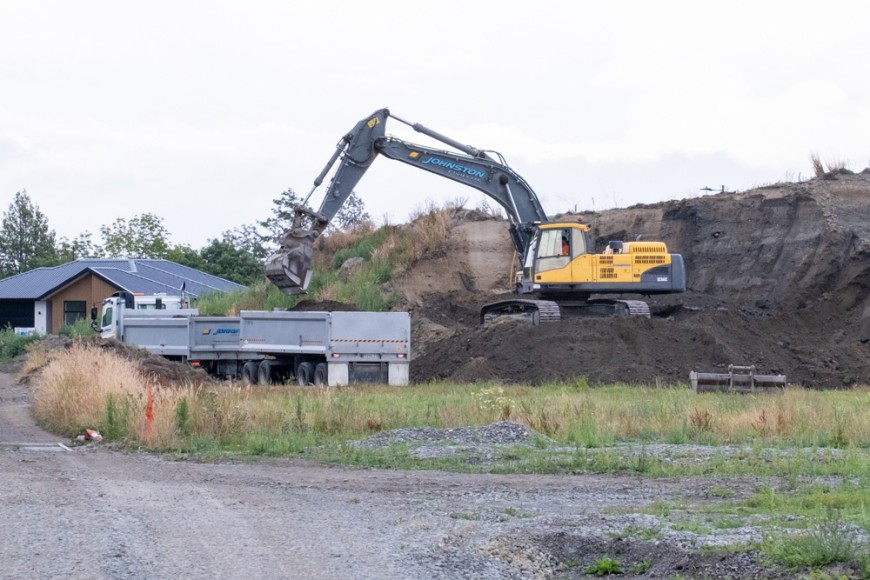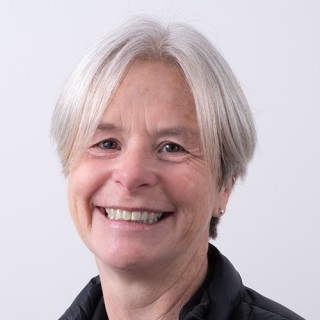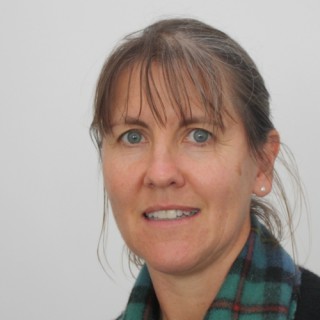Anecdotally, the scale of the problem is large, although there is a lack of data on the amount of material seen as ‘surplus’ soil and lack of agreement on what should be measured.
Manaaki Whenua senior researcher Dr Jo Cavanagh says there has been growing awareness of the lack of sustainability of current practices in managing these soils including disposal costs, carbon emissions associated with transporting surplus soils, unnecessarily filling up landfills – as well as the simple wastage of this valuable resource.

Housing developments create huge disturbances of soil, often leaving quantities of unwanted or surplus soil.
Jo and fellow Manaaki Whenua researchers Dr Robyn Simcock, Dr Hadee Thompson-Morrison, and Garth Harmsworth worked with multiple sectors in AoNZ to disentangle the factors leading to the generation, and barriers to the beneficial use, of surplus soils, Some factors leading to the generation of surplus soils include geotechnical (un)suitability or contamination concerns, while barriers to reuse include regulatory challenges associated with the use of materials containing trace elements above background concentrations, and logistic challenges in matching the generation and use of materials.
A key finding was the absence of a wider understanding of soil properties, beyond geotechnical and contaminant considerations.
“Addressing the challenge associated with surplus soils needs different thinking that focuses on valuing soils and understanding the beneficial attributes that can provide different beneficial uses” says Jo.
She adds that development projects should be designed with surplus soil management in mind from the start to minimise the generation of surplus soils and to maximise the on-site re-use.
The work involved te ao Māori (Māori world) and mātauranga Māori (Māori knowledge) from inception to completion with the whakapapa of soil (including its connection to an area, location, tribe, and ecosystem) underpinning decision-making. Māori have no definition for surplus soil or what it would look like but rather all soils are considered a resource and treasure, or taonga tuku iho, regardless of condition.
A parallel project with Auckland Council undertaken by Jo, Robyn and Hadee assessed beneficial use of sediments excavated from stormwater ponds during routine maintenance operations. This work highlighted similarities in the concerns around sustainability, regulatory and logistical challenges and potential solutions, but also demonstrated use of excavated sediments to successfully grow native plants. High water content and/or anaerobic status of excavated sediments are additional complicating factors for their beneficial use.
Through the projects there was strong engagement with different industry sectors, including contaminated land management and waste disposal to land, as well as central and local government and government agencies, including regional and unitary councils, city and district councils, the Ministry for the Environment, Land Information Aotearoa New Zealand, Kainga Ora – Homes and Communities, and Māori.
‘Offsetting the demand for virgin materials through reused/reprocessed surplus soils is one opportunity to use surplus soils and sediment,” says Jo.
Key recommendations from the report included filling information gaps on the amounts of surplus soils and sediment generated and from where and establishing principles for developing a surplus soil sustainable management framework that enable the right systems and processes to be put in place. These include minimising the generation of surplus soils and maximising on-site use by considering these factors at the design stage, and ensuring use of soils and sediments on- and off-site have clearly defined beneficial use.
The surplus soils project was undertaken with funding from an Envirolink Tools Grant for the Regional Council Contaminated Land and Waste Special Interest Group and the Land Monitoring Forum, while the beneficial reuse of sediment from stormwater ponds project was undertaken for Auckland Council.

